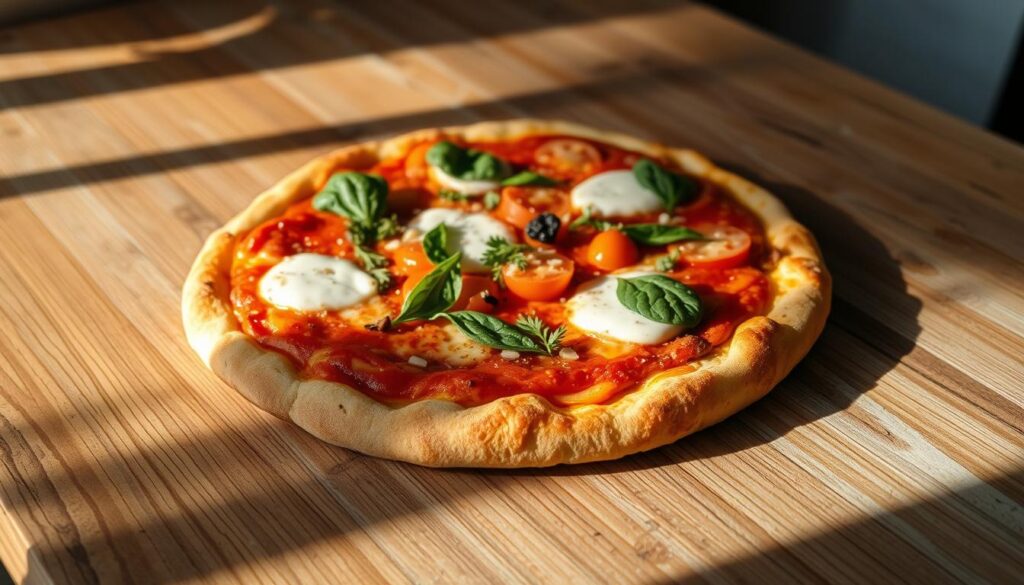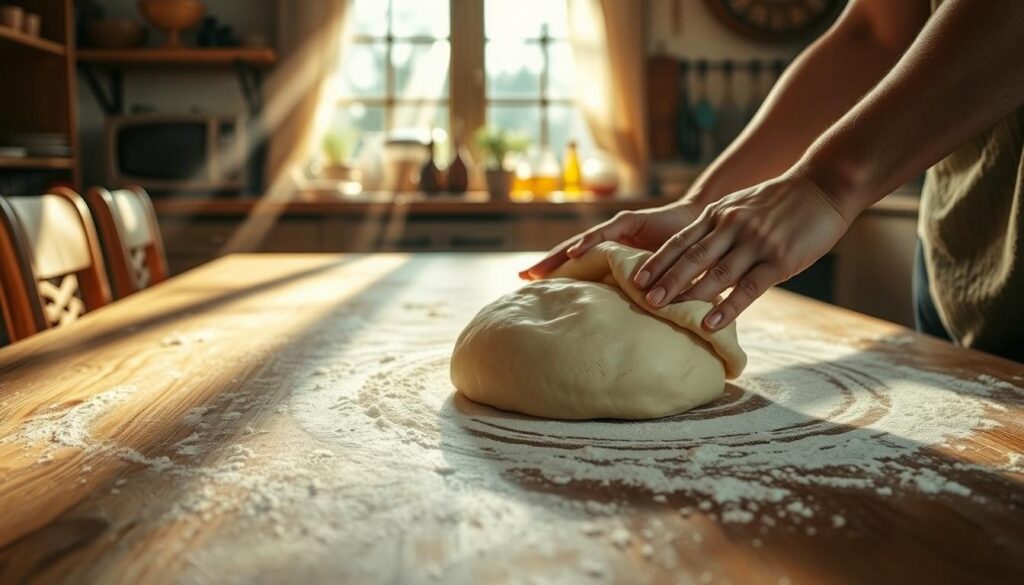
There’s something truly magical about crafting your own homemade pizza. The process of pizza making allows for creativity, experimentation, and, most importantly, the joy of sharing freshly baked slices with loved ones. In this article, we’ll dive into a variety of easy pizza recipes that cater to all tastes, from classic Margherita to gourmet creations. We’ll explore unique pizza toppings, offer tips for selecting the finest ingredients, and even discuss cooking techniques that can elevate your pizza game. Get ready to turn your kitchen into the neighborhood’s favorite pizzeria!
Key Takeaways
- Homemade pizza is a fun and creative activity perfect for family gatherings.
- Explore diverse pizza recipes to suit everyone’s taste preferences.
- The choice of ingredients plays a crucial role in enhancing flavor.
- Learning to master different cooking techniques can elevate your pizza.
- Sharing pizza with friends adds to the overall enjoyment of the experience.
Understanding the Basics of Pizza Making
Making quality pizza at home is an enjoyable experience, beginning with the understanding of essential pizza ingredients and the right tools. Choosing the best ingredients directly influences the final product, while having the proper pizza making tools can make the process smoother and more efficient.
The Importance of Ingredients in Pizza Making
Quality pizza starts with the selection of quality pizza ingredients. The type of flour used impacts the crust—00 flour is favored for its fine texture, while all-purpose flour provides good results as well. Tomato sauce acts as the foundation, where fresh tomatoes offer vibrant flavor compared to canned options. Cheese plays a significant role; mozzarella is a classic choice, whereas provolone adds a delightful depth. Fresh herbs like basil provide aromatic notes that elevate the overall taste.
Essential Tools for Homemade Pizza
Investing in the right pizza making tools is crucial for creating an outstanding pizza. A pizza stone helps achieve that irresistible crispy crust by evenly distributing heat. A pizza peel allows for easy transfer from the countertop to the oven, while a good pizza cutter ensures clean slices. Stand mixers or dough kneaders can simplify the dough preparation process. Finding quality tools enhances the overall pizza-making experience, making it not only easier but more enjoyable.
Classic Pizza Recipes You Can’t Go Wrong With
When it comes to classic pizza recipes, nothing beats the simplicity and freshness of Margherita pizza, the spicy kick of pepperoni pizza, and the versatility of vegetarian pizza variations. These timeless recipes cater to all tastes and make any meal special.
Margherita Pizza
To create a delightful Margherita pizza, you need the following ingredients:
- Pizza dough
- Tomato sauce
- Fresh mozzarella cheese
- Fresh basil leaves
- Olive oil
- Salt
Follow these steps for a memorable pizza:
- Preheat your oven to 475°F (245°C).
- Roll out your pizza dough on a floured surface to your desired thickness.
- Spread a thin layer of tomato sauce on the dough.
- Add slices of fresh mozzarella evenly across the pizza.
- Top with fresh basil leaves.
- Drizzle with olive oil and a sprinkle of salt.
- Bake for 10-12 minutes until the crust is golden and the cheese is bubbly.
Pepperoni Pizza
Pepperoni pizza remains a favorite among many pizza enthusiasts. Here’s what you’ll need:
- Pizza dough
- Tomato sauce
- Shredded mozzarella cheese
- Slices of pepperoni
- Italian seasoning
- Olive oil
Prepare this pizza with these easy instructions:
- Preheat your oven to 475°F (245°C).
- Roll out your pizza dough and place it on a baking sheet.
- Spread tomato sauce over the dough.
- Sprinkle shredded mozzarella generously on top.
- Arrange pepperoni slices over the cheese.
- Sprinkle with Italian seasoning and drizzle with olive oil.
- Bake for around 10-15 minutes until the cheese is melted and the edges are crispy.
Vegetarian Pizza Variations
Vegetarian pizza opens up a world of possibilities. Here are some popular ingredient combinations:
- Spinach, ricotta cheese, and artichokes
- Bell peppers, onions, and mushrooms
- Zucchini, pesto, and goat cheese
- Tomatoes, olives, and feta cheese
Feel free to mix and match your favorite toppings. The beauty of vegetarian pizzas lies in their adaptability, allowing every individual to create a unique masterpiece personalized to their taste.
Exploring Unique Toppings for Your Pizza
Pizza-making offers an exciting chance to experiment with unique pizza toppings that can elevate your homemade creation to a new level. By embracing seasonal pizza, you can incorporate fresh ingredients that enhance flavor and showcase the best of what each season has to offer. Think of vibrant summer squash or hearty autumnal pumpkin, both of which introduce delightful tastes while celebrating nature’s bounty.
Seasonal Ingredients for Pizza Toppings
When focusing on seasonal selections, fresh produce can invigorate your pizza recipes. Ingredients like heirloom tomatoes in summer or roasted root vegetables in winter add depth of flavor. Using locally sourced vegetables not only supports farmers but also allows you to create memorable pizzas bursting with freshness. Consider combinations that merge sweet and savory aspects, such as a butternut squash base topped with tangy feta cheese.
Gourmet Topping Ideas for the Adventurous
For those seeking gourmet pizza, the world of toppings expands dramatically. Ingredients like creamy goat cheese, luscious figs, or even smoked salmon introduce a layer of sophistication and intrigue. Unleashing your pizza creativity can open doors to unexpected flavor pairings, such as a white pizza topped with prosciutto, arugula, and a drizzle of balsamic glaze. Keeping an open mind and combining diverse elements can lead to amazing culinary discoveries. Craft a pizza that tells your personal story, utilizing flavors and textures that resonate with your palate.
Healthier Pizza Options to Try
For those desiring a nutritious twist on the classic slice, healthier pizza options bring joy without compromising flavor. By choosing a whole wheat pizza crust, pizza enthusiasts can enjoy a fiber-rich base that supports a balanced diet. This crust offers a delightful nutty flavor while also providing essential nutrients.
Whole Wheat Crust Recipes
Creating a whole wheat pizza crust is simple and rewarding. To make the dough, combine:
- 2 cups whole wheat flour
- 1 packet of active dry yeast
- 3/4 cup warm water
- 1 tablespoon olive oil
- 1 teaspoon salt
Mix the dry ingredients, then add the warm water and olive oil. Knead until smooth, let it rise, and bake. This whole wheat pizza crust produces a wholesome foundation for any topping.
Low-Calorie Toppings for Guilt-Free Enjoyment
Transform your pizza into a guilt-free meal by choosing low-calorie pizza toppings. Opt for:
- Fresh vegetables like bell peppers, spinach, and mushrooms
- Lean proteins such as grilled chicken or turkey
- Reduced-fat cheese or a sprinkle of nutritional yeast for a cheesy flavor without the calories
By incorporating these ingredients, one can relish a healthy pizza that satisfies cravings while keeping caloric intake in check. Embrace this approach to create the perfect guilt-free pizza experience.
Specialty Pizzas for Every Occasion
Specialty pizzas bring a delightful twist to any gathering or celebration. Two standout options are BBQ chicken pizza and breakfast pizza. These creations not only satisfy cravings but also elevate the dining experience, making them perfect for various occasions.
BBQ Chicken Pizza Recipe
For a tantalizing BBQ chicken pizza, start by preparing your favorite crust. Spread a generous layer of tangy barbecue sauce as the base. Top it with grilled chicken pieces, red onions, and a blend of cheeses. The sweetness of the BBQ sauce complements the savory chicken beautifully, offering a flavor explosion perfect for casual get-togethers or game nights. Here’s a simple recipe to try:
- 1 pre-made pizza crust
- 1 cup cooked, shredded chicken
- 1/2 cup BBQ sauce
- 1 cup shredded mozzarella cheese
- 1/4 cup sliced red onion
Bake in a preheated oven at 450°F for about 12-15 minutes, or until the cheese is bubbly and the crust is golden. This BBQ chicken pizza can easily become a staple at your gatherings.
Breakfast Pizza Ideas
Breakfast pizza opens up a world of creative possibilities. Start with a dough or crust that suits your taste. Use a base of scrambled eggs topped with crispy bacon, diced tomatoes, and a sprinkle of cheddar cheese. This morning treat can add a perfect touch to weekend brunches or a leisurely morning with family. Here are some creative toppings to consider:
- Scrambled eggs with greens
- Crumbled sausage and mushrooms
- Spinach and feta cheese
- Avocado and fresh herbs
Each variation provides a unique flavor profile, ensuring everyone enjoys a slice. These specialty pizza recipes bring fun and flavor to any pizza for occasions, making every meal memorable.
The Pizza Dough: Homemade vs. Store-Bought

When it comes to crafting the perfect pizza, the type of pizza dough used plays a crucial role in determining the overall flavor and texture of your pie. Making homemade pizza dough can be a rewarding experience, allowing you to customize the ingredients to your liking. On the other hand, store-bought dough offers convenience for those who may not have the time or experience to make it from scratch. Understanding the differences and benefits of each can help in choosing the right option for your pizza-making adventures.
How to Make the Perfect Pizza Dough from Scratch
Creating homemade pizza dough starts with simple ingredients. Below is a straightforward recipe that guarantees a delicious crust:
- 2 cups of all-purpose flour
- 1 teaspoon instant yeast
- 1 teaspoon salt
- ¾ cup warm water
- 1 tablespoon olive oil
Follow these steps for successful dough preparation:
- In a mixing bowl, combine flour, yeast, and salt.
- Gradually add warm water and olive oil, mixing until a dough forms.
- Knead the dough on a floured surface for about 8-10 minutes until it becomes smooth and elastic.
- Place the dough in a greased bowl, cover it, and let it rise in a warm area for at least 1 hour.
- Once doubled in size, punch down the dough and shape it according to your pizza preferences.
This homemade pizza dough yields a delightful texture and flavor, making it a favorite among pizza enthusiasts.
When to Use Store-Bought Pizza Dough
Store-bought dough can be a lifesaver when time is limited or when cooking for a crowd. Opting for this convenience doesn’t mean sacrificing quality. Some fantastic options are available, including pre-made dough from brands like Pillsbury or Trader Joe’s. Consider store-bought dough in the following situations:
- Quick meals: Perfect for busy weeknights when you want to whip up a pizza in no time.
- Novice cooks: Great for those who may feel overwhelmed by the dough preparation process.
- Unexpected guests: Ready-made dough allows for spontaneous pizza nights without extensive planning.
Regardless of whether you choose homemade pizza dough or the convenience of store-bought options, the journey of making pizza is sure to be enjoyable and delicious.
Pizza Cooking Techniques to Master
Perfecting homemade pizza involves mastering various cooking pizza techniques that enhance flavor and texture. An essential tool for achieving a crispy crust and evenly cooked toppings is the pizza stone. This tool works by absorbing moisture and distributing heat uniformly, making it a favorite among pizza enthusiasts. Preheating the pizza stone before baking is crucial; it helps create that desired golden-brown finish.
Using a Pizza Stone for Best Results
A pizza stone helps mimic the high heat of a traditional pizza oven. To use it properly, follow these steps:
- Place the pizza stone in your oven and preheat it to at least 500°F (or the maximum temperature of your oven).
- Allow the stone to heat for 30 minutes, ensuring it reaches the right temperature.
- Transfer your pizza onto the hot stone using a pizza peel for an even cook.
This method delivers a fantastic crust that you simply cannot achieve with a regular baking sheet.
Oven vs. Grill: What’s Best for Your Pizza?
Choosing between oven pizza and grill pizza can depend on personal preference and available equipment.
| Method | Pros | Cons |
|---|---|---|
| Oven Pizza |
|
|
| Grill Pizza |
|
|
Each technique has its distinct advantages and challenges, allowing pizza lovers to explore varying tastes and textures at home.
Tips for Serving and Pairing Your Pizza

Enhancing your pizza experience goes beyond just choosing the right toppings. Implementing thoughtful pizza serving tips can elevate any gathering. Selecting the right beverages, along with creative side dishes for pizza, plays a significant role in crafting delightful pizza meal combinations.
Best Wines and Beverages to Serve with Pizza
Wine and pizza pairings can create a memorable dining experience. For many, classic options include:
- Chianti: This red wine complements tomato-based sauces beautifully.
- Sangiovese: Ideal for a variety of toppings, offering a fruity yet earthy flavor.
- Pilsner or Lager: Crisp and refreshing, perfect for lighter pizzas like Margherita.
- Craft Beers: Experimenting with local craft beers can enhance flavor profiles.
Consider these pizza serving tips to match your beverages perfectly with your pizza selection. The right pairing ensures each bite becomes a tasty adventure.
Creative Side Dishes to Complement Your Meal
Serve side dishes for pizza that enhance the overall meal. Here are popular options to consider:
- Mixed Green Salad: A light salad adds freshness, balancing out the richness of pizza.
- Garlic Bread: This classic accompaniment offers delightful flavors and textures.
- Caprese Skewers: Simple and elegant, these provide a burst of fresh ingredients.
- Antipasto Platter: A variety of meats, cheeses, and marinated vegetables can enhance your pizza feast.
Utilizing these suggestions ensures not only a satisfying meal but also a delightful experience for your guests, making each pizza night special.
Conclusion
In conclusion, making homemade pizza is not just a culinary task; it’s a delightful journey that allows for endless creativity and experimentation. Through the various pizza recipes we explored, from classic Margherita to unique gourmet toppings, there’s a recipe for every palate. Whether you choose to make your dough from scratch or opt for store-bought convenience, the beauty of pizza lies in its versatility to cater to all tastes.
Remember the pizza making tips shared throughout this article as you embark on your pizza-making adventures. Don’t hesitate to mix and match toppings, try different cooking techniques, or even invite friends and family to join you in this flavorful experience. Pizza is not only a meal; it’s a way to bring people together and share in the joy of cooking.
So, gather your ingredients, roll out the dough, and make your own pizza masterpiece! We encourage you to share your creations and experiences, fostering a vibrant community of pizza lovers eager to discover new and exciting homemade pizza possibilities. Embrace the art of pizza making, and who knows what unforgettable flavors you’ll create next!
FAQ
What type of flour is best for homemade pizza?
The best flour for homemade pizza is typically “00” flour, which is finely milled and high in protein, giving the crust a wonderful texture. Alternatively, bread flour can also work well due to its higher gluten content, which contributes to a chewy crust.
How can I achieve a crispy pizza crust?
To achieve a crispy pizza crust, use a pizza stone or a baking steel and preheat it in your oven at the highest setting for at least 30 minutes. Also, make sure not to overload your pizza with toppings, as this can make the crust soggy.
Are there any healthy pizza toppings I can try?
Definitely! Some healthy pizza toppings include fresh vegetables like spinach, bell peppers, mushrooms, and red onions, as well as lean proteins like grilled chicken or turkey. You can also consider using less cheese or opting for low-fat cheese for a lighter option.
Can I freeze homemade pizza dough?
Yes, you can freeze homemade pizza dough! After kneading, allow it to rise, then wrap it tightly in plastic wrap and place it in a freezer bag. It can be kept frozen for up to three months. When you’re ready to use it, just thaw in the fridge overnight before shaping and baking.
What are some unique gourmet pizza toppings to try?
For a gourmet twist, consider toppings like figs, goat cheese, or smoked salmon. Seasonal items like butternut squash in the fall or fresh arugula in the summer can also elevate your pizza experience. Don’t hesitate to mix and match these for delightful combinations!
What tools do I need to make pizza at home?
Essential tools for making pizza at home include a pizza stone for even heat distribution, a pizza cutter for clean slices, a peel for transferring pizza to and from the oven, and a stand mixer for easily kneading dough. These tools can help streamline your pizza-making process.
How can I make pizza dough with whole wheat flour?
You can make whole wheat pizza dough by replacing some or all of the all-purpose flour with whole wheat flour. Keep in mind that you may need to add a little more water, as whole wheat flour absorbs more moisture. Aim for a soft and slightly sticky texture when kneading.
What’s the difference between oven-baked and grilled pizza?
Oven-baked pizza usually results in a more traditional texture with a crisp crust, while grilled pizza gives a smoky flavor and unique char. When grilling, preheat your grill, use a pizza stone or a grill-safe pan, and keep a close eye on it to avoid burning.
What beverages pair well with pizza?
Great beverages to pair with pizza include red wines like Chianti or Pinot Noir, as well as craft beers and even sparkling water with lemon. The key is to balance the flavors; heavier pizzas go well with bolder drinks, while lighter pizzas pair nicely with crisp, refreshing options.